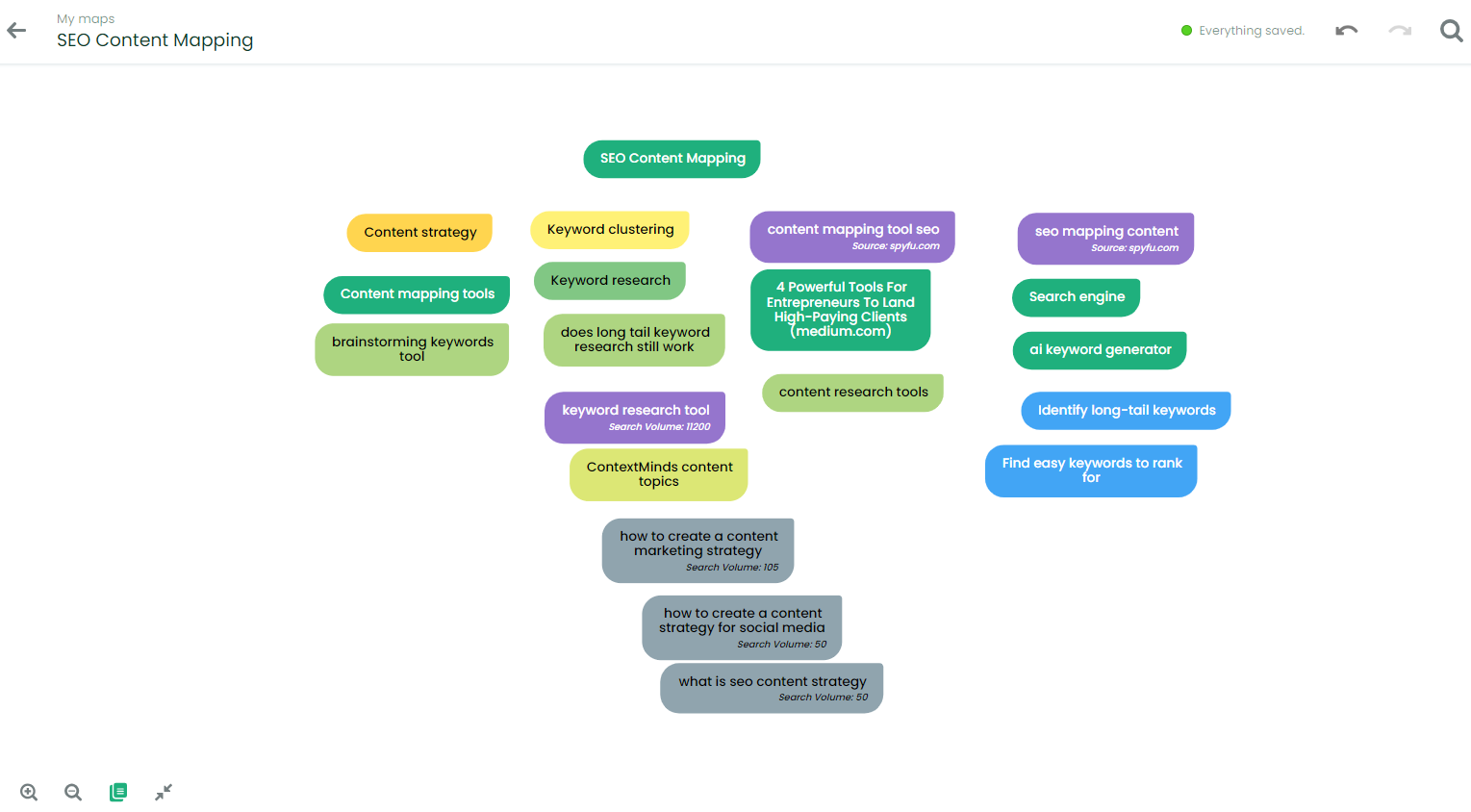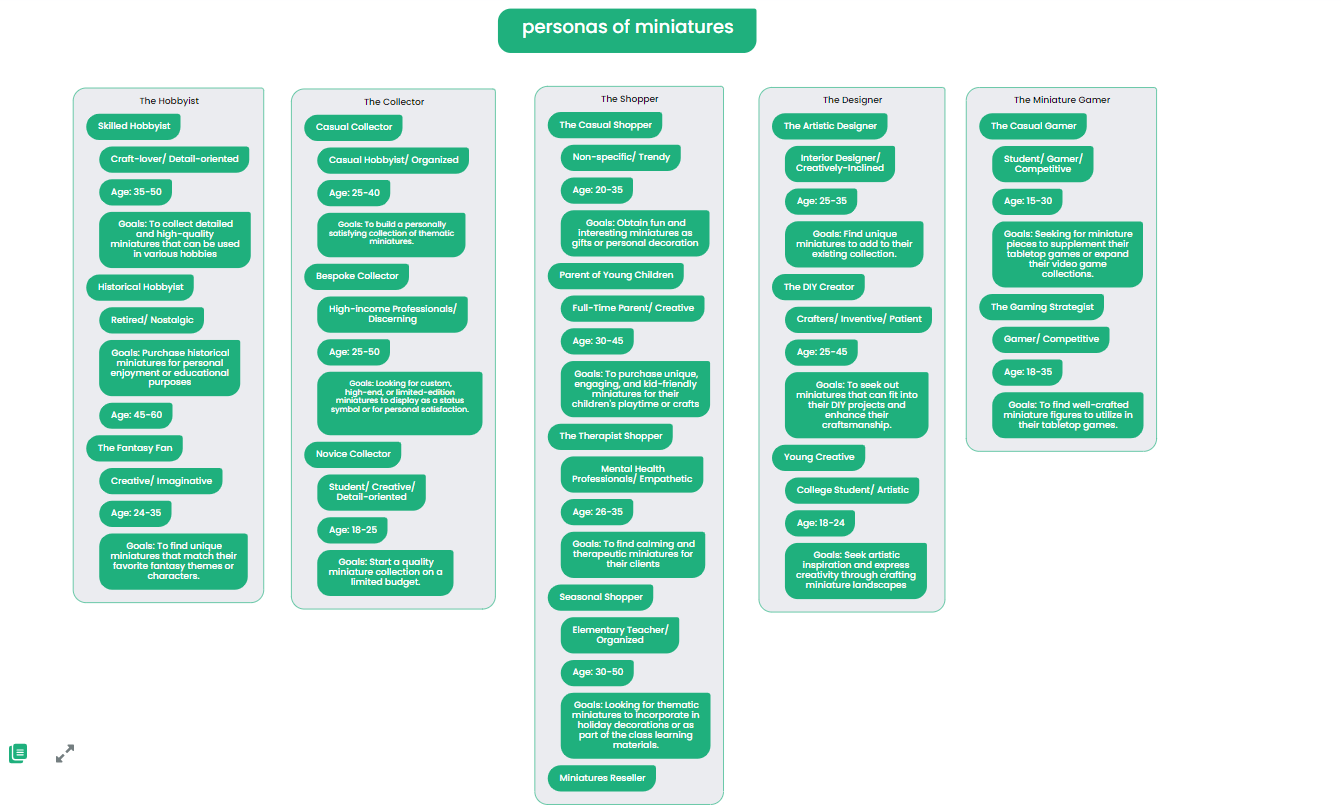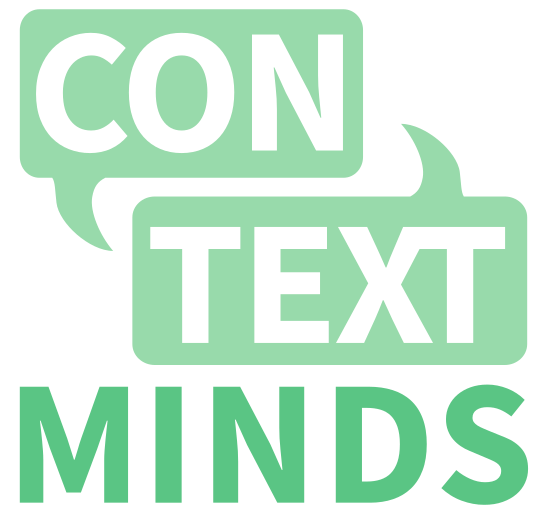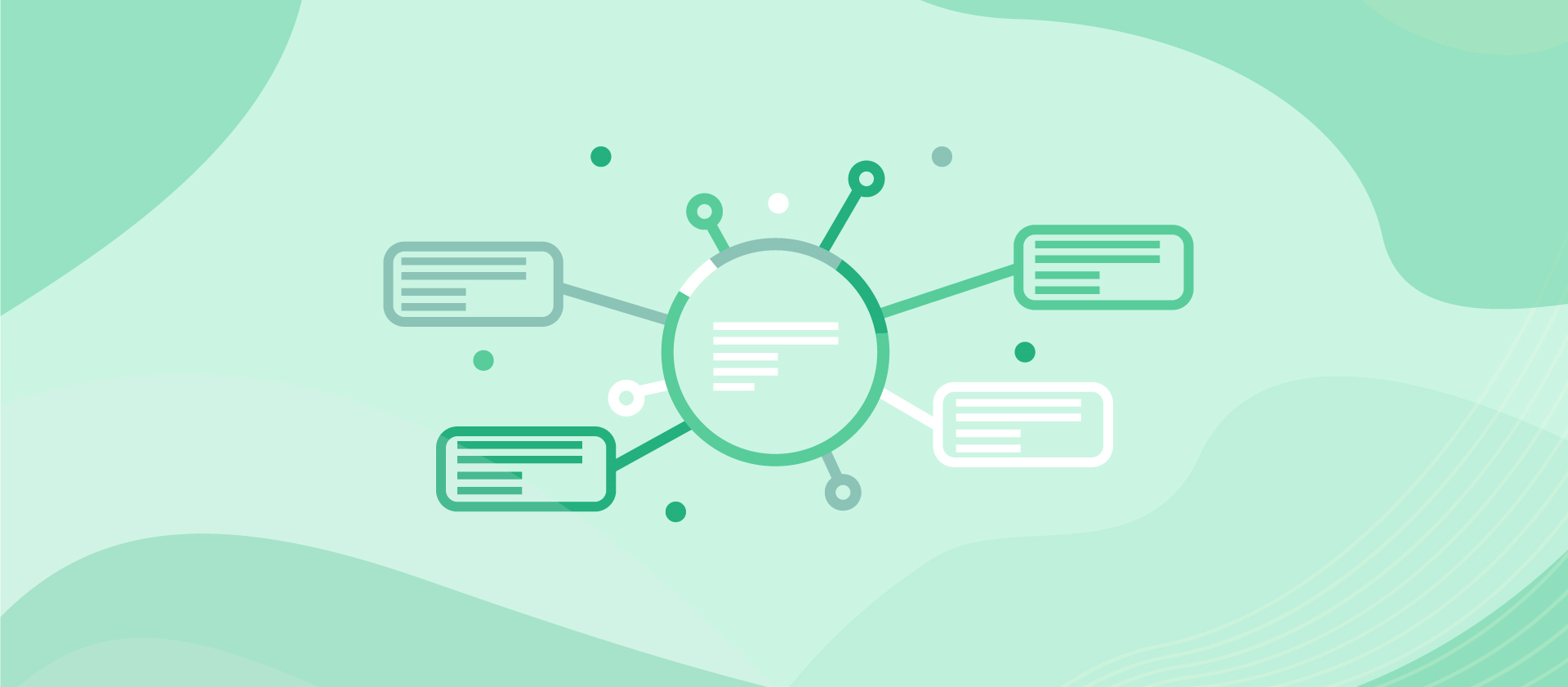From User Intent to Content Creation: A Comprehensive Guide to SEO Content Mapping
Imagine the frustration of spending hours on content, only to see it buried on page two of Google's search results, practically invisible. Now, picture the opposite: your content dominates the top spot and, in doing so, solves real problems for your audience. That's what SEO Content Mapping promises—a precise compass to guide you through the labyrinth of online content.
This isn't just about achieving higher rankings; it's about delivering exactly what your audience requires, precisely when they need it.
In this guide, we'll walk you through the process of creating content that perfectly aligns with your audience's needs and desires. Get ready to embark on a journey that will empower you with the tools and knowledge to navigate this exciting digital realm.
Understanding SEO Content Mapping
SEO Content Mapping: Your Digital Guide
In the digital landscape, SEO Content Mapping is your essential guide. It's the process of aligning your content strategy with what your audience is searching for online.
SEO Content Mapping involves a thorough analysis of your target audience's search behavior. It entails identifying the specific keywords and phrases they use and creating content that caters to their needs.

Think of it as a roadmap that leads you to the heart of your audience's interests. By understanding user intent and search intent, you can create content that not only ranks well but also resonates with your audience.
For example, if you're a travel agency, you might discover that your audience is searching for information about beaches. In response, you can create content about the best beach destinations and include keywords such as "best beaches in Florida." By creating content around what your audience is looking for, you'll rank higher on search engines and drive more traffic to your website.
Balancing User and Search Intent for Effective Content
When you're in the process of crafting content, it's essential to strike a delicate balance between two critical elements: user intent and search intent. Let's break down these essential concepts:
User Intent: This term refers to what a person seeks when they enter a specific keyword or phrase into a search engine. It's about understanding the user's underlying motivation for conducting that search. For instance, someone searching for "home fitness routines" may be looking for workout plans they can follow at home.
Search Intent: In contrast, search intent pertains to the language and criteria employed by Google's algorithm to determine which results should be displayed in response to a user's query. It's essentially the digital gatekeeper that decides which content aligns most closely with what users are looking for.
The magic of SEO Content Mapping lies in finding the sweet spot where user intent and search intent converge. It's like discovering the perfect harmony where your audience encounters precisely what they need when they turn to Google.
Identifying Target Keywords that Align with User Intent
Keywords are the building blocks of content mapping. Identifying the right keywords that align with user intent is crucial for creating content that ranks well and satisfies your audience's search queries.
Conduct thorough keyword research using reliable tools like ContextMinds or other SEO platforms. Look for keywords and phrases that closely relate to what your audience is searching for. Consider long-tail keywords, which are more specific and often indicate higher user intent. Prioritize keywords that strike a balance between search volume and competition.
By identifying target keywords that align with user intent, you'll be equipped to create content that ranks prominently on search engines and genuinely serves your audience's needs and desires.
Mapping keywords to user intent is like pairing the perfect wine with a meal; it elevates the experience to a new level. You don't have to be an SEO guru to get this right; a little savvy and the right tools can go a long way.
Now, there are plenty of tools that can help you do this, and ContextMinds is a great choice. It identifies potential keywords and goes a step further by offering real-time suggestions and related topics. This ensures that you're in sync with your audience today and prepared for the questions they'll have tomorrow.
The Buyer's Journey and Keyword Mapping: A Symphony in Sync
Your audience is on a journey, and your content needs to accompany them at every turn. But this journey isn't linear—it's cyclical and ever-changing, just like their needs. During the awareness stage, users typically use broad search terms. They're window shopping, so to speak. Creating introductory, educational content that answers basic queries can be a great strategy here.
When they move to the consideration stage, the questions are getting nuanced. They're not just asking "what" anymore; they're asking "which" and "why." This is where your content should deepen, offering comparison guides or feature breakdowns.
By the decision-making stage, they're ready for the hard facts, perhaps even looking for that final push. They may be searching for terms like "best deals on [your product]" or "[your product] vs [competitor]." Your content here should aim for the kill—offering concrete reasons why your solution fits their needs, maybe even throwing in a few customer testimonials for good measure.
The Key Components of Content Mapping
Content Mapping is a strategic process that involves several crucial components, such as:
Creating a Content Inventory that Caters to User Intent
A content inventory is like a treasure trove of insights about your existing content assets. It's a detailed list of all the content you've created, including blog posts, articles, videos, and more. Analyzing this inventory allows you to align your content strategy with user intent.
To create a content inventory:
- Start by categorizing your existing content based on topics and keywords.
- Assess each piece of content's performance—look at metrics like page views, engagement, and conversion rates.
- Identify which content pieces align closely with what users are searching for. This analysis will guide you in optimizing existing content and identifying gaps that need to be filled with new, user-centric content.
Persona Profiles: Mapping Content that Resonates with Your Audience's Needs
Persona profiles are detailed descriptions of your ideal customers or audience segments. They encompass various aspects like demographics, behaviors, preferences, and pain points. By creating persona profiles, you gain valuable insights into your audience's needs and preferences, which are instrumental in crafting content that resonates.

To create persona profiles:
- Start by researching your target audience.
- Gather data from surveys, social media analytics, and customer feedback.
- Identify common characteristics and pain points among your audience segments. Once you have well-defined persona profiles, you can tailor your content to address their specific needs, challenges, and interests.
Creating SEO-Optimized Content for User Intent
Crafting SEO-optimized content is not just about ticking the SEO checklist; it's about striking a balance where your content resonates with both search engines and humans. This sweet spot is where high rankings meet high engagement. From effective structuring to keyword placement, this section delves into crafting content that both Google and your users will love.
Structuring Your Content for User Goals: Where Form Meets Function
Structuring your content is like laying out a floor plan for a home; you want everything in the right place to create a seamless user experience. Hook readers with an engaging introduction that identifies their pain points. Arrange your main points and arguments logically, making sure to pepper in relevant keywords. Call-to-actions are your doors to the next room; make sure they're well-placed and make sense, given where the reader is in their journey.
Mastering On-Page SEO: More Than Just Keywords
Sure, keywords are essential, but they're just one element of a successful SEO strategy. Leverage the power of headings, meta descriptions, and even image alt text. On-page SEO is the art of making your page an open book for search engines. That's where tools like ContextMinds can offer you that extra edge. The platform helps identify target keywords and their semantic relatives, allowing your content to come across as natural, relevant, and expertly crafted.
Content That Engages: The Art of Keeping Eyes on the Page
Creating content people want to read is both an art and a science. Use varied sentence structures, bullet points, and visuals to break the monotony. Include case studies, real-world examples, or statistical data to back your points. These ingredients don't just engage the reader; they also add layers of credibility to your content. Engagement isn't just about looking good; it's about delivering accurate, tangible value to your audience.
Metrics That Matter: Gauge Your Content's Resonance with Users
If you're flying blind, you're taking a gamble with your content. Tracking the right metrics will tell you if you're hitting the mark. Think of metrics like user engagement, page views, and even more advanced data points like scroll depth. Knowing these numbers can reveal how well your content aligns with user intent.
Data-Driven Refinements: Making Your Content Strategy a Living Entity
A static strategy is a sinking ship. Continual optimization is the name of the game. Use tools and dashboards to assess your content's performance. Look for trends and outliers in user behavior. Is a specific piece of content attracting more visitors? Dive into the why and replicate that success. Conversely, find the underperformers and diagnose their shortcomings.
Avoiding the Trapdoors: Navigate Clear of SEO Mapping Pitfalls
Mistakes happen, but in the world of SEO, some errors can cost you months of work. You don't want to be penalized by Google for duplicate content or get lost in the shuffle because you targeted the wrong keywords. Being aware of these pitfalls will help you maintain a content strategy that is both user-centric and search engine-friendly.
In a nutshell, think of this section as your GPS. It helps you know where you stand, decide where you want to go and avoid wrong turns along the way.
Conclusion
If you've followed us through this journey, you've gained a robust toolkit for mastering SEO Content Mapping. In essence, it's your blueprint for aligning your content with what your audience is actively seeking. From understanding the intricacies of user and search intent to crafting content that resonates and finally to the metrics that ensure you're on the right path, it's a comprehensive strategy for digital success.
It’s a comprehensive strategy for digital success, involving understanding user and search intent, crafting resonating content, and ensuring the right metrics are followed.
So, what's next for you? It's time to put these insights into action. Take a hard look at your existing content, arm yourself with the right metrics, and begin the journey of content optimization. And remember, refinement is a constant process; what worked today may need tweaking tomorrow.
Now, you're well-equipped to conquer the digital frontier. Happy mapping!

Useful links
Contact info
+420 607 881 942
info@contextminds.com
ContextMinds s.r.o
Blanická 922/25, Prague, Czechia
All Rights Reserved | EMC Engineering, s.r.o.









